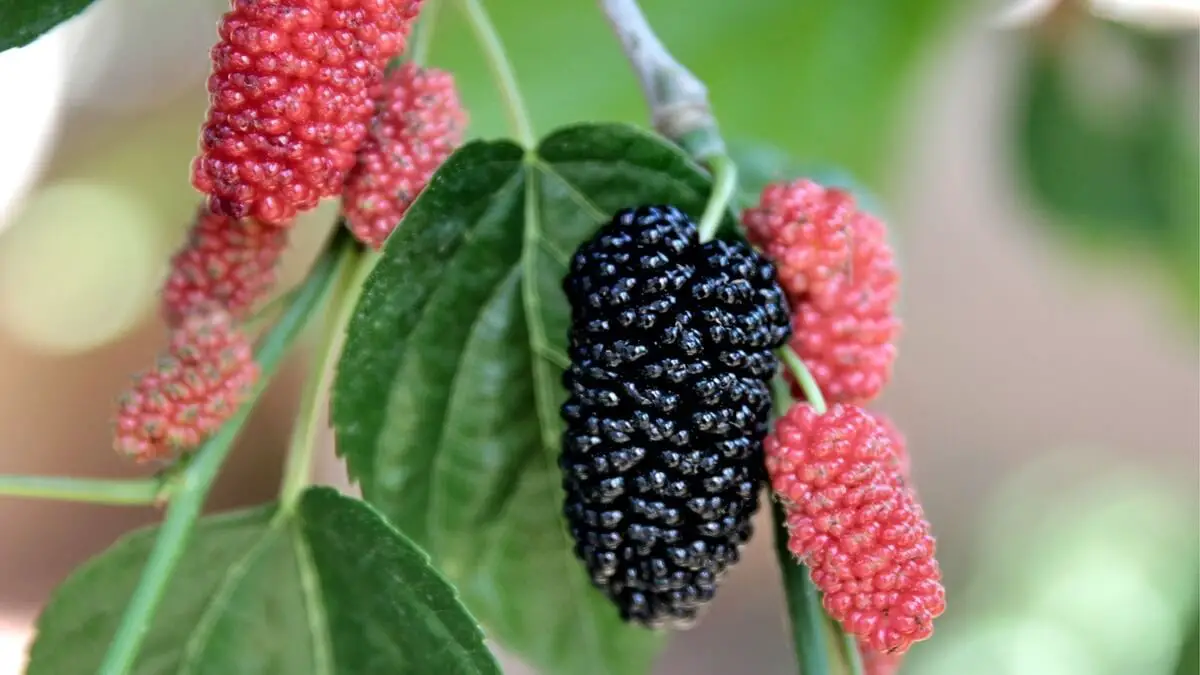How to Grow Mulberry Bushes
Mulberry bush species are members of the Moraceae family. This family consists of species of several deciduous trees commonly called mulberries. These trees grow abundantly in various temperate regions around the planet. Naturally, they grow abundantly in the wild. Many farmers around the world cultivate them commercially also.
This article focuses on growing mulberry bush in the garden, its varieties, and uses.
Table of Contents
Mulberry Bush – Types
Generally, there are three main species of the mulberry bush (or mulberry tree) – white mulberry (Morus alba), red mulberry (Morus rubra), and black mulberry (Morus nigra). Some people believe the experts have named the species ostensibly based on the fruit color.
In fact, botanists have discovered more than 200 species of these bushes. Among them, Broussonetia papyrifera is the closely related genus to the three well-known species. Hence, some botanists consider them the fourth most common variety.
Red Mulberry
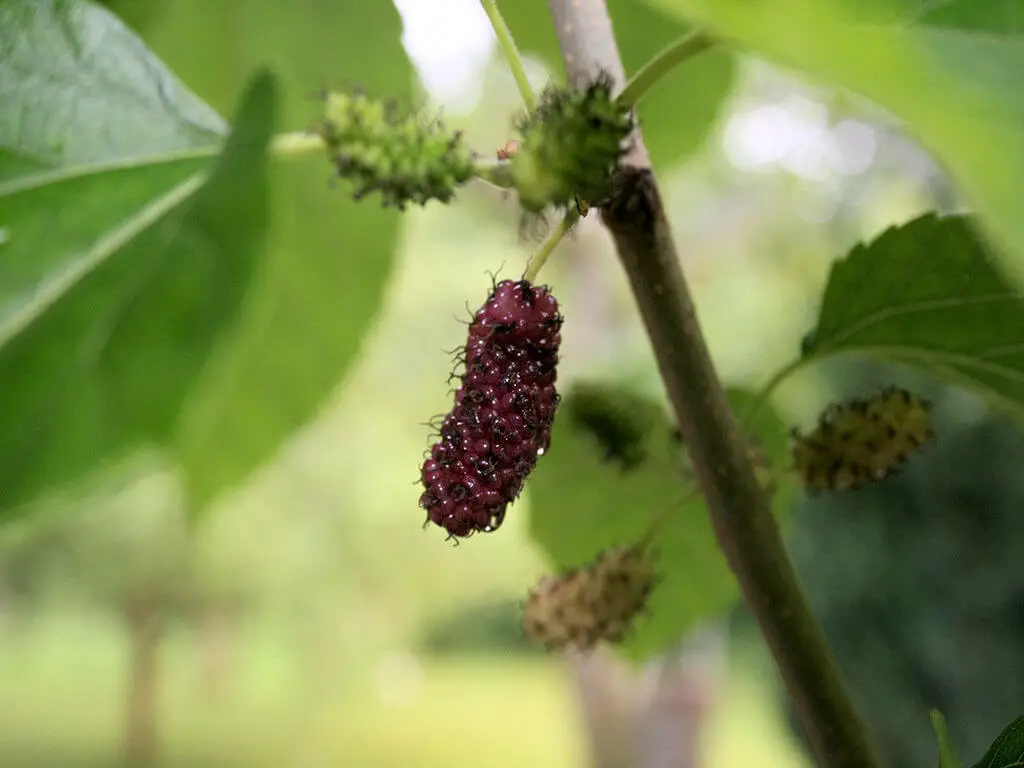
Photo by LeonAdler (Wikimedia Commons) (CC BY-SA 3.0)
The Red mulberry (Morus rubra) has its native roots in the United States. Mostly, its fruits have reddish-black color. Some native American indigenous tribes loved this fruit as their favorite food. They consumed it both in raw and dried forms. They also used it in dumplings and sauces.
White Mulberry
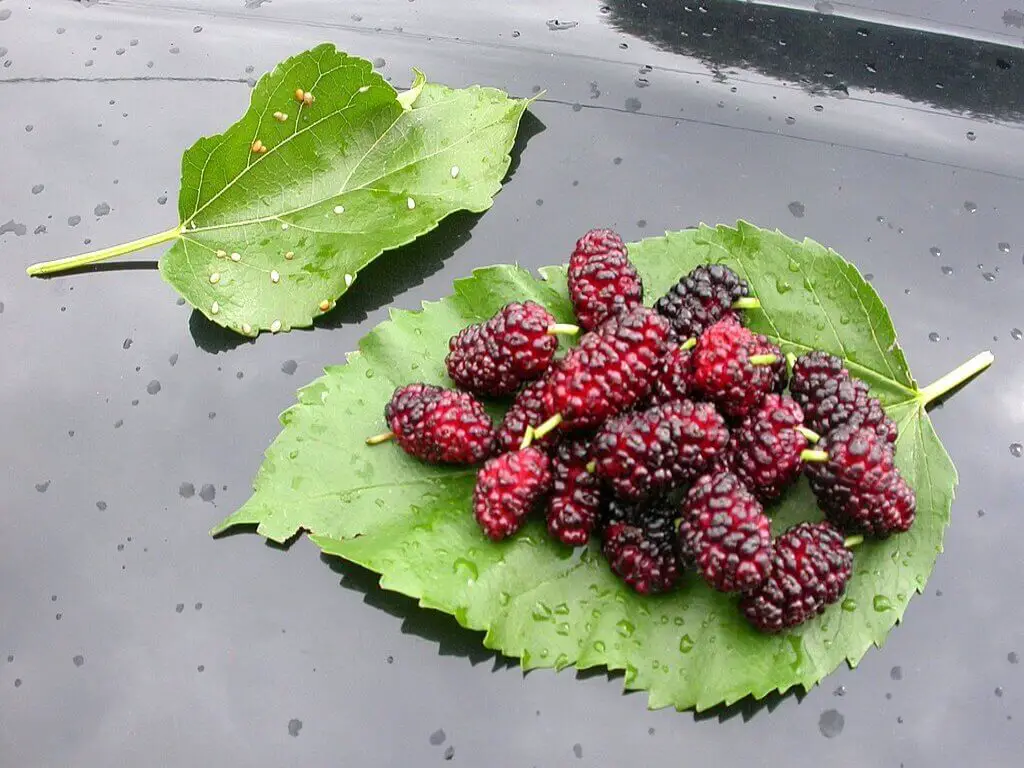
Photo by Andre Abrahami (Wikimedia Commons) (CC BY-SA 2.5)
The European taxonomists named the cultivated mutations based on the fruit color. However, the wild versions of these trees have black, purple, or pink-colored fruits like other members.
This variety of mulberry bush (White mulberry) has its origin in South Asia. But you can also find them across Europe, North America, South America, and Southern Africa. Due to its spreading ability, most people in the US and brazil population consider these species as invasive plants.
Black Mulberry
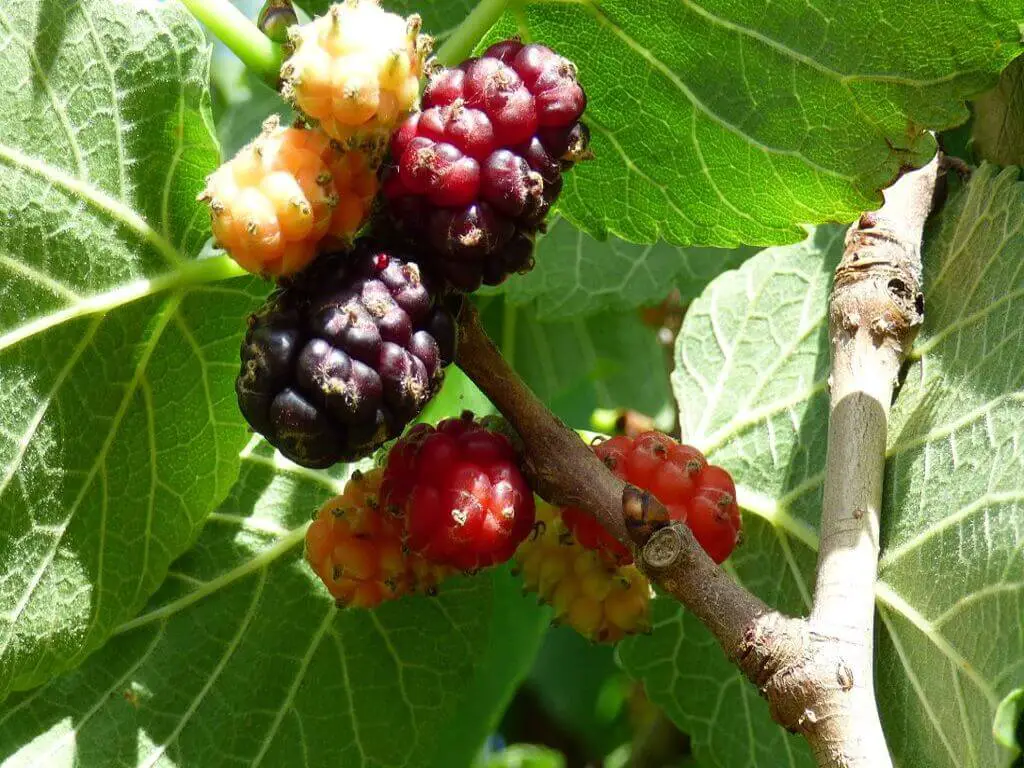
Photo by Miloslav Bahna (Wikimedia Commons)(CC BY-SA 4.0)
This specie (black mulberry – Morus nigra) is native to Iran and some parts of Iraq. It bears mostly black color fruits.
Paper Mulberry
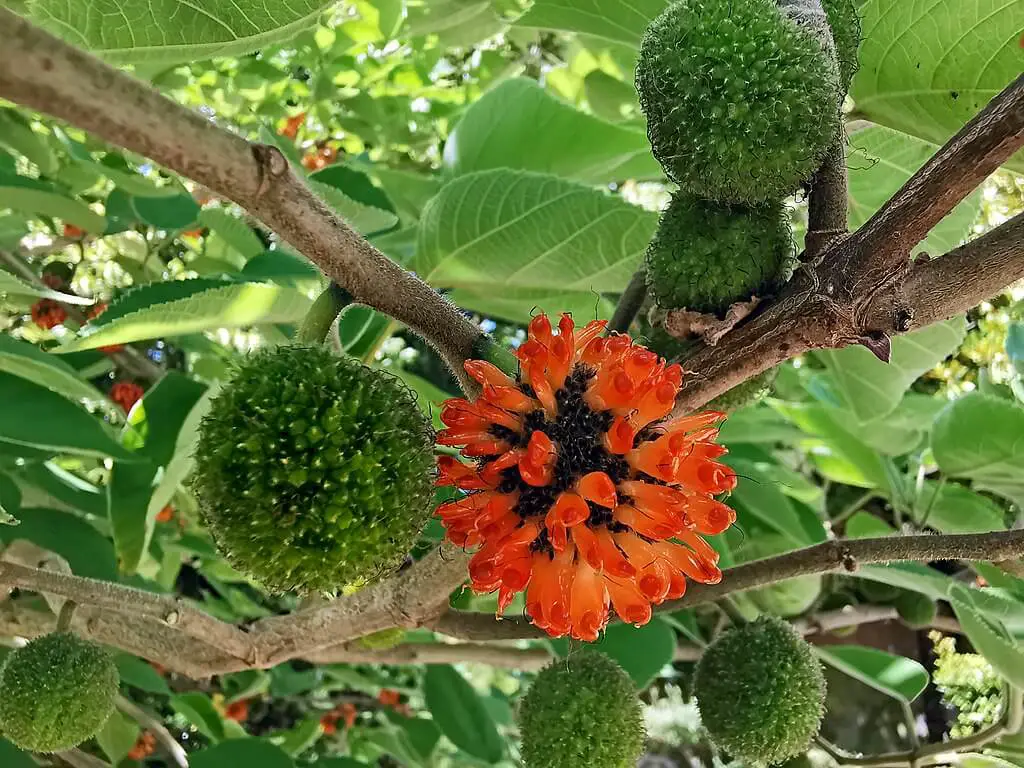
Photo by Archaeodontosaurus (Wikimedia Commons) (CC BY-SA 4.0)
The paper mulberry (Broussonetia papyrifera) has many common names including tapa cloth tree. These species are native to Asia. You can find this tree spread across China, Taiwan, Japan, Korea, Burma, and India.
In fact, these mulberry bush cultivars are introduced species in some parts of Europe, the US, and Africa. Nowadays, these species have naturalized themselves in these regions and continue to spread vigorously. Most people in the US consider these species as invasive ones.
Typically, this variety of trees cater to the production of cloths and paper. Hence experts named it “Paper mulberries”.
Mulberry Bush – Characteristics
Mulberry bush or (Mulberry trees) grow well in USDA classified Hardiness Zones 5-9.
Reseeding effectively, these trees grow in abundance quickly. Hence, you can expect your cultivated ones to fill the gardens very quickly. In addition, these trees are well known for their cool shades during hot summers.
In fact, you can produce your own woodlands within 4-5 years with these trees. But make sure to plant them in faraway lands, free from underground utilities. Otherwise, their fast-spreading roots may disrupt the utility lines underground.
Moreover, these trees can grow to their full potential in the faraway lands, as they are left undisturbed. In fact, they can form an ecosystem of their own under these conditions.
The Black mulberry trees and Red mulberry trees can grow almost 35 feet in height. The white mulberry trees can grow almost double comparatively, up to 70 feet tall. The Paper mulberry trees can shoot up to 30 feet in height. The lifetime of these trees can even exceed a century!
Usually, these trees produce fruits within two years of propagation. These fruits have commercial value. Hence, these trees can be lifetime assets, if managed professionally.
The mature mulberry fruits change texture and color. They become juicy, plum, and sort of succulent resembling blackberry fruits.
White mulberries may be black, lavender, or white in color, with a sweet taste. Similarly, red mulberries are sweet and juicy, with usually deep red color. Black mulberries are usually black in color with a balanced sweet and tart (citrus) taste.
Propagation – Mulberry Bush
You can propagate mulberry bush from seeds or plants. You can also grow them from cuttings. Make sure to purchase them from reputed vendors.
Growing From Seeds

Mulberry bush (or Mulberry trees) prefers to grow in well-draining alkaline soils with adequate moisture. Hence, you can find black mulberry trees growing abundantly along the river beds.
So, make sure to amend your soil with clay, sand or loam, before planting the seeds. This facilitates the seeds, especially black mulberry seeds to germinate in an accustomed location.
Select an airy location with full sunlight. These trees can thrive in partial shades also. Plant the seeds several meters apart. Otherwise, their branches partially block sunlight from reaching one another. This may cause several common diseases among the plants.
It is advisable to plant them in blocks with a spacing of at least 1.8 x 1.8 m (6 x 6 ft). However, if you increase the spacing to 2.4 x 2.4 m (8 x 8 ft), the trees can enjoy more air passage.
Make sure to sow the seeds at least half-inch deep in the soil. You can find more specific instructions in the seed package. It is also advisable to start the sowing process after the frost season.
In the initial stages, water regularly and maintain the soil moisture. After the plants become established, decrease the watering frequency.
Growing from Cuttings or Live trees
You can also grow mulberry bush (or mulberry trees) from cuttings or transplant purchased live plants. For cutting propagation, cut the stems at least 8 -12 inches long from the top. Makes sure each stem has at least 3 buds.
Avoiding the frost season, start the propagation in June or July.
Make sure that, each branch has at least 3 buds developed. It is also advisable to start this process during June or July months, avoiding the frost season as a whole.
Cut out the leaves and remove other debris from the bottom portion of the cuttings. Dip the bottom end of the branch in a good quality rooting gel. This will promote new root growth.
Place the cuttings in a hole dug at least 3 – 4 inches deep, in an upright position. After that, cover the hole completely by refilling the soil. In the case of live plants, make sure to bury the root ball portion fully underground.
In the initial stages, water the plants regularly to maintain the soil moist. Later, when the plants establish themselves, you can decrease the watering frequency
Pruning Mulberry Bush
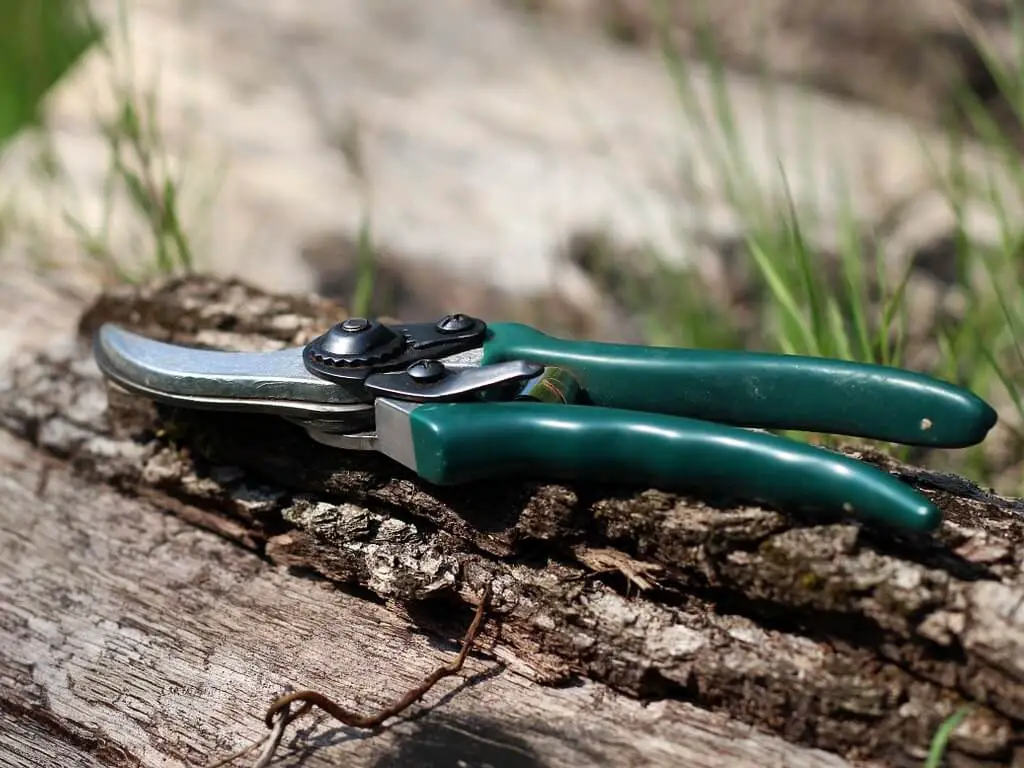
Generally, mulberry bush (or mulberry tree) is one of a few trees that require very minimal maintenance. During the dormant periods, trim the sick, damaged, and dead branches. Dispose of the debris of immediately as it can attract common pests and diseases.
Avoid pruning the trees during the sap production periods. if the liquid oozes out of the branches, delay pruning until it stops. This may take a few days or even a few weeks. After that, start pruning with sterilized, good-quality garden shears.
After the trees mature, keep a watch on the surroundings. These trees tend to be invasive. So, if you find any nuisance saplings, pull them out immediately. This helps to control the spreading.
Otherwise, the strong rooting systems of the trees can damage the underground utilities on their path. They can even damage the old, unhealthy foundations of buildings. Always use good quality Garden Gear while performing any garden-related activity.
Harvesting Mulberry Bush
Harvesting these trees is easy. In fact, you can pluck them with a gentle touch or by applying minimal pressure. They come out handy readily.
To start the harvest, first, place a sheet or cloth around the tree. Then, shake the above branches lightly. The ripened fruits fall down readily in large numbers. You can collect them in a bucket and rinse them in water for further processing.
Being juicy and messy, these fruits can cause stains in used sheets, buckets, storage areas Etc. In some mediums like carpets, these fruits can mark permanent stains. So, it is advisable to keep dedicated resources for harvesting.
Normally, these fruits do not have long shelf lives. Hence, use them or preserve them after harvesting as early as possible. Depending on the variety, these fruits can taste sweet or citrus. In any case, you can enjoy them raw.
For ornamental purposes, some gardeners grow fruitless versions of mulberry bushes (or mulberry trees).
Nutrition Facts of Mulberry Bush
Within a couple of years, Mulberry bush (or Mulberry tree) develops fruits. These fruits contain essential nutrients in large numbers. For example, every 100 g (3.5 oz) of mulberry fruit, contains vitamin C (44% of the Daily Value), iron (14% of the Daily Value), and other essential micronutrients in large quantities.
Raw mulberries contain 10% carbohydrates, 1% protein, 88% water, and less than 1% fat.
Mulberry Bush – Uses
Diet Supplement
The leaves and fruits of the mulberry bush cater as dietary supplements in the food industry. However, the white sap of mulberry bush (or mulberry tree) may be stimulating, toxic, and slightly hallucinogenic. Hence, it is advisable not to consume the sap in its raw form.
Silk Industry
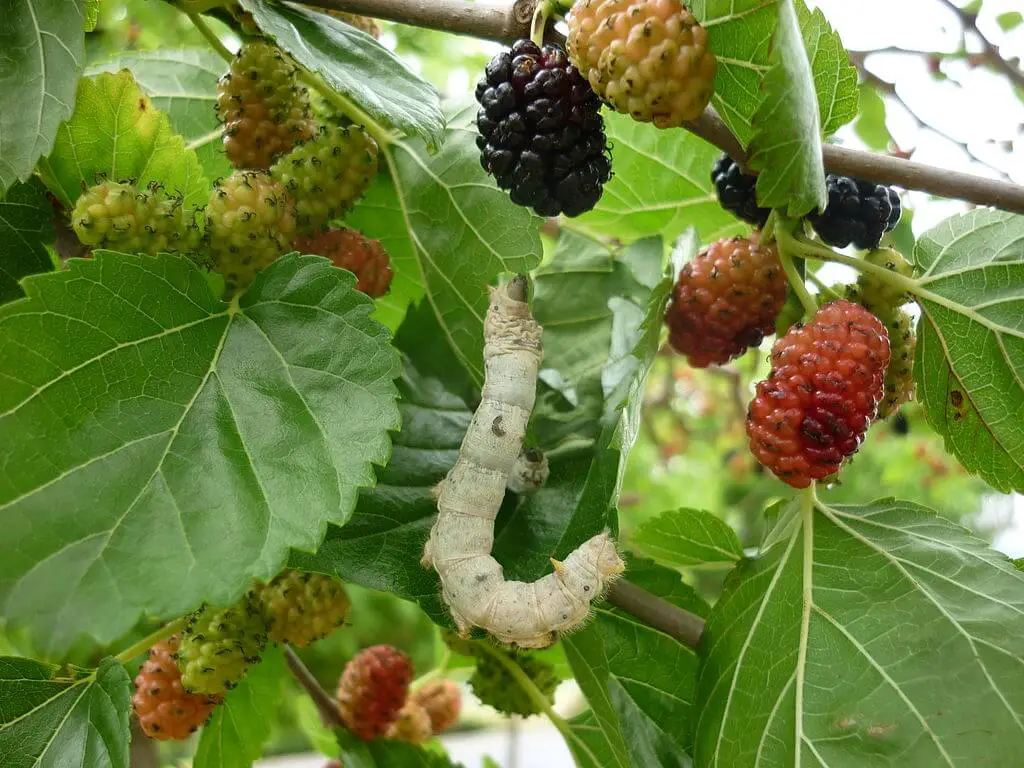
Photo by Archaeodontosaurus (Wikimedia Commons)(CC BY-SA 4.0)
The leaves of the mulberry bush (or mulberry tree) play an important role in the silk industry. The Bombyx mori (silkworm) feeds on Mulberry leaves, especially those of white mulberry bush. The silk factories produce silk from the cocoons of these silkworms.
The wild silk moth and also other Lepidoptera larvae feed on mulberry leaves.
Pigments
Generally, the mulberry bush (or mulberry tree) develops numerous fruits. These fruits derive their color from anthocyanins. These anthocyanins produce water-soluble rich fruit colors. Hence, they serve as natural food colorants in food industries. There is a huge demand in the commercial markets for these natural food colorants.
Paper Industry
During the Khmer Empire era (Angkorian age) of Southeast Asia, Buddhist monks manufactured papers from the mulberry tree barks. They used these papers to make books (kraing).
The Hidaka Washi company, based in Japan produces the world’s thinnest paper (Tengujo). It started paper production in 1949. The paper is so thin, that it appears to be almost transparent. Hidaka Washi uses stems of mulberry bushes (Kozo), tororo-aoi plant liquid (Neri), and alkaline water to produce this paper.
This paper is used in many applications. Some of the examples include Lighting design and archival conservation.
FAQ
How long does it take a mulberry tree to produce fruit?
The average time from planting to fruiting is two to three years, with some growers seeing fruit as early as the second year. However, it could take about 10 years or more if grown from seed.
Where is the best place to plant a mulberry bush?
Mulberry bushes are tolerant of a wide range of soil types but prefer well-drained soil high in organic matter. They can be planted in full sun or partial shade.
What are the benefits of growing a mulberry bush?
In addition to providing tasty fruit, mulberry bushes can also add visual interest to your landscape with their attractive foliage and growth habit. They are fast-growing plants that can provide quick coverage and privacy. Mulberry bushes can also be used for erosion control on slopes.
How do you care for a mulberry bush?
Mulberry bushes are relatively low-maintenance plants. They should be fertilized in early spring with a general-purpose fertilizer. Mulberry bushes can be pruned to control their size and shape. They typically don’t require much water once they are established.
What are some common pests and diseases of mulberry bushes?
Mulberry bushes are generally resistant to pests and diseases. However, they can be susceptible to aphids, scale, and whiteflies. These pests can be controlled with insecticidal soap or horticultural oil. Mulberry leaf spot is a common disease that can cause the leaves to develop brown or black spots. Leaf spot can be controlled with a fungicide.
What are some uses for mulberries?
Mulberries can be eaten fresh, cooked, or dried. They can also be used to make jam, jelly, syrup, and wine. Dried mulberries can be added to cereal, oatmeal, yogurt, or baked goods.
What is the history of the mulberry bush?
The mulberry bush is native to Asia but was introduced to Europe and North America. It is believed that the fruit was first cultivated in China over 5,000 years ago. Mulberry bushes were brought to America by early settlers who planted them for their fruit and as a source of food for livestock.
Mulberry bushes are now grown commercially in many countries for their fruit. In addition, the leaves of the mulberry bush are also used to feed silkworms, which produce silk thread.
How fast do mulberry bushes grow?
Mulberry bushes are fast-growing and can reach up to 15 feet tall. They can be trimmed to keep them at a manageable size.
What is the lifespan of a mulberry bush?
White mulberry trees can live for over 100 years, while red mulberry trees have a lifespan of around 50 years.
However, the lifespan of most mulberry bushes is typically 25-50 years. Improper pruning, insects and diseases, and inadequate water are the main reasons mulberry bushes have a shorter lifespan.
Are mulberry bushes deer resistant?
Mulberry bushes are not deer resistant. Deer will eat the leaves and berries of the bush.
Do mulberry bushes produce fruit every year?
Mulberry bushes typically produce fruit every year. The trees bear fruit from June until September.
What is the nutritional value of mulberries?
Mulberries are a good source of vitamins C, iron, K1, E, potassium, and fiber.
Mulberry Leaves are rich in carbohydrates, fibers, vitamins (A, B1, B2, B6, C), minerals (calcium, magnesium, potassium, iron), amino acids, and antioxidants.
Final Thoughts
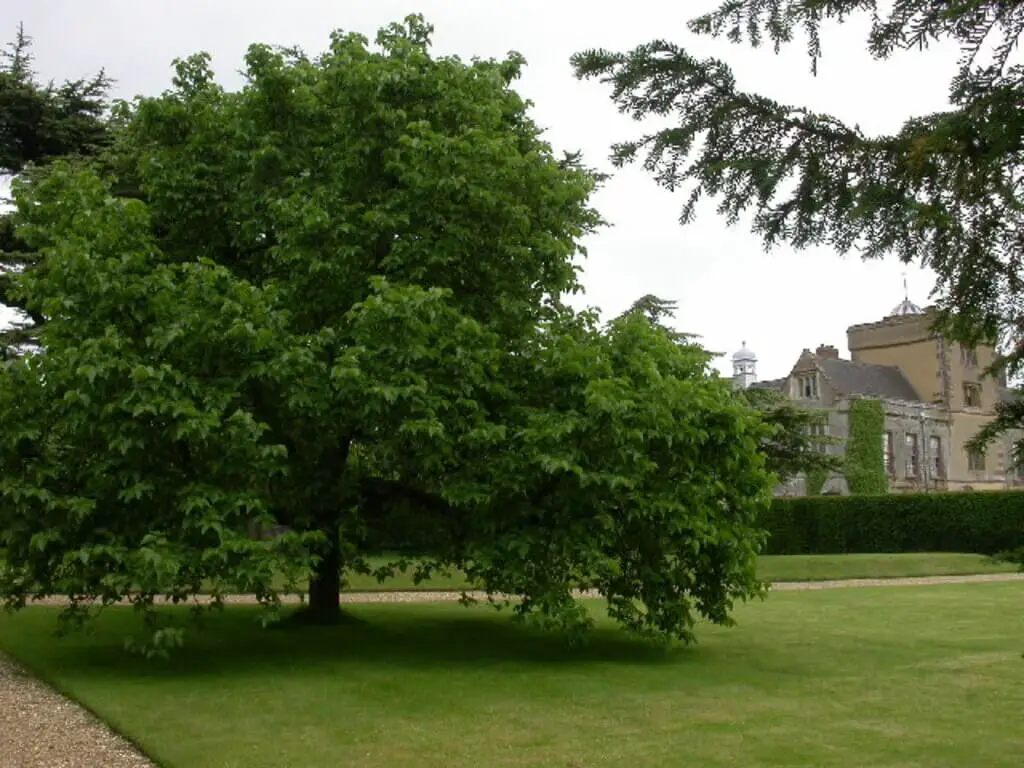
Photo by Kokai (Wikimedia Commons) (CC BY-SA 2.0)
With its sweet fruits, the mulberry bush or (mulberry trees) attract birds. The view of these beautiful birds itself is enough to soothe the hearts. You can eat the tasty, juicy fruits raw. You can also enjoy them in your lemonades, cocktails, and many other drinks.
Being messy and juicy, the fruits may leave permanent stains on the cloths. So, care about the clothesline under these trees.
Providing food and shade, these trees can be your assets for about a century! With glossy, green foliage, the fruitless varieties can decorate your premises as ornamental trees also.
Naturally, if you have enough space, these trees are worth a try! You will never regret growing them as they can gift you in their own ways!
Similar Posts
How to Grow Japanese Plum Trees (Loquat Trees)
How to Grow an Asian Pear Tree

